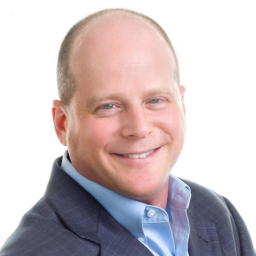Bridging Generations in the Workplace
By Christine Preusler
During the economic downturn of 1993, which rendered numerous college graduates unemployed, a young Meagan Johnson landed a job at Quaker Oats. The company had recruited her directly from the campus of Arizona State University. With a company car and card at her disposal, Johnson was initially ecstatic — but her enthusiasm waned as the realities of the job set in.
“I absolutely hated it,” she said. “At the time, I couldn’t pinpoint what the issue was, but it boiled down to a significant generational gap between me and my two bosses, who were Baby Boomers (born 1945-1964).
There were miscommunications on my part and theirs about what truly mattered, the best way to communicate and how to work.”
In 2024, Generation Y (Millennials, born 1981-1994) and Generation Z (born 1995- 2009) get a lot of flak for challenging the workplace status quo. But in 1993, it was Johnson’s Generation X (born 1965-1980) that faced skepticism and disapproval in traditional workplaces, where their preferences for flexibility and work-life balance clashed with established norms.
“Back then, people were always talking about 20-somethings in the workplace — how tough and demanding we were, how we had unrealistic expectations,” Johnson said. “That’s what got me interested in the different generations and their expectations in the workplace.”
As time progressed and a wave of Millennials entered the workforce, Johnson became even more aware of the significance of staying attuned to the ever-evolving generational landscape — and carved out an entire career path dedicated to the pursuit.
Today, Johnson is a generational expert, speaker and author. Her best-selling book, “Generations, Inc.,” offers practical insights on tackling generational issues in the workplace. Her research and presentations have helped organizations of all sizes navigate multi-generational clashes and create collaborative workplaces.
During the upcoming MHEDA Emerging Leaders Conference in Chicago on July 25, attendees will have the opportunity to glean insights from Johnson on the nuanced art of resolving multi-generational conflicts. Johnson’s session, “Zap the Generational Gap: Transforming, Recruiting, Retaining and Engaging Multi-generational Teams,” will offer a deep dive into strategies for bridging generational divides.
The timing is right, as a notable demographic shift in manufacturing has seasoned professionals nearing retirement. According to Johnson, cultivating a new cohort of younger leaders poised to step into these roles means identifying and preparing successors — but also understanding their preferences and approaches to work.
In that way, Johnson’s expertise dovetails directly into the theme of this year’s Emerging Leaders Conference: Common Ground Leadership.
“Common ground leadership is about focusing on the big picture,” Johnson says. “What is the goal? The fact that different generations may approach that goal differently doesn’t matter if everyone brings their best skills to the party.”
To find common ground, leaders must first overcome the challenges inherent in multi-generational teamwork.
“We’re all guilty of it, myself included,” Johnson said. “We find a good way of working, get into our groove and are good at what we do. And then along comes somebody fresh out of college or with one or two jobs under their belt, and no matter how gently they say it, all we hear is what we are doing is outdated. So, we get defensive.”
Johnson said the phrase “If it ain’t broke, don’t fix it” originates from this mindset — but warned that it’s a limiting one.
“We must allow the younger, newer generations to challenge us,” she said. “Does that mean we throw away everything we’ve done? No. As I tell audiences, if somebody suggests something, ask yourself whether it negatively impacts cost, quality, safety or service. If not, that’s your first sign to try and see what happens.”
Johnson said seasoned leaders often express frustration at the younger generation’s lack of comprehension regarding established practices — but it’s essential for both sides to engage in a reciprocal exchange of understanding. While younger team members should try to grasp the rationale behind longstanding approaches, experienced leaders must constantly evaluate whether these methods are optimal. Even if they disrupt familiar routines, embracing new perspectives can lead to more efficient processes and foster innovation.
“The challenge is to always remain current,” Johnson said.
Debunking Generational Myths
Managing multi-generational teams also requires dispelling common generational stereotypes and misconceptions in the workplace. “One myth I like to poke at is that the younger generations are lazy, not loyal and don’t want to pay their dues,” Johnson said. “On the flip side, I often think that the younger generation assumes that the older generations do not want to change, especially when it comes to embracing new technology.”
The reality, as evidenced during the COVID-19 pandemic, is that older generations readily embraced new technology when necessary to fulfill their responsibilities. However, there often exists a generational discrepancy in the approach to adopting new technology, she said: Older individuals typically seek a clear understanding of how the technology will enhance their work or daily life first, acknowledging that the learning curve may be steeper for them as late adopters.
While younger generations may navigate technological advancements more effortlessly due to early exposure, late adopters prioritize comprehending how the technology will streamline tasks or improve efficiency before fully embracing it, especially if the learning process is challenging.
Regarding assumptions about younger generations’ willingness to “pay their dues,” Johnson contends that it’s not a matter of resistance but rather a desire for a different workplace dynamic, noting a shift from the traditional hierarchical ladder structure to a horizontal, lattice like approach.
“While previous generations, such as Baby Boomers, may have prioritized climbing the corporate ladder, younger individuals focus on cultivating broad networks and connections,” Johnson said.
She encourages leaders to support younger employees in constructing their lattice by fostering opportunities for diverse experiences and connections rather than emphasizing vertical career advancement.
Making the Work-From-Home Era Work
Any discussion of generational workplace dynamics would be remiss without considering the impact of remote and virtual working environments — a topic Johnson admits is blazing hot.
“One of my clients said to me, ‘It used to be that you didn’t talk about politics or religion with people; now, it’s politics, religion or remote work.’”
Opinions may vary, but the fact remains: Before COVID, Millennials, still the youthful force in the workplace, often advocated for increased flexibility. Employers often resisted, citing the necessity of specific on-site tasks or technological limitations.
The pandemic abruptly changed this narrative, revealing that many roles once deemed location-bound could indeed be performed remotely. The change, previously anticipated to evolve over many years, was condensed to a few months.
The struggle many leaders now face is preserving their corporate culture while accommodating diverse work arrangements.
“Younger generations can be a little shortsighted here. You’re cutting yourself off at the knees if you don’t focus on building relationships in a face-to-face environment,” Johnson said. “So, if you’re not going into an office, you better look at associations — like MHEDA — where you can create those relationships.”
Johnson said people often base their decisions on biases toward individuals they know, like or share common ground with — those they have interacted with, shared meals or socialized with. These personal connections carry weight.
Interestingly, despite the convenience of remote work, Johnson said workers still value face-to-face interactions and actively seek opportunities for such engagements.
Millennials, for example, prioritize collaboration and seek regular feedback, a practice that may not always align with the preferences of individuals from older generations.
“As a leader, you have to think: ‘When was the last time I communicated something more than just a fact about a client or a document that needed to be signed?’”
While this approach may demand more time, it’s crucial to consider the broader goal: ensuring employees feel valued and appreciated in their roles, fostering retention and an ongoing commitment to delivering excellent work.
Ultimately, Johnson hopes attendees will leave her session at the Emerging Leaders Conference with actionable ideas on how to do just that.
“I don’t want them to walk away saying, ‘Well, that was entertaining, but we’re not Google, we’re not Amazon, and we can’t put up a pickleball court in the middle of the office,’” she said. “My goal is for people to have a good time they feel is well-spent because they have tools they can put into place in their work environment or personal life right away.”




